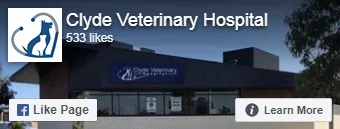The True Cost of Caring for Your Pet: Why Vet Bills Add Up

The rising costs of veterinary care and vet bills in Australia can often lead to misconceptions among pet owners regarding the value and necessity of such expenses. While it may seem that veterinary services are exorbitantly priced, several factors contribute to these costs, which often exceed those associated with human healthcare. This blog aims to elucidate the underlying reasons behind the expense of veterinary treatments, emphasising the costs of running a veterinary practice, as well as the expenses associated with medications and equipment.
Why Vet Bills Add Up
-
Business Operational Costs
Running a veterinary clinic involves a multitude of operational expenses that are akin to those faced by human healthcare facilities. These costs include rent or mortgage payments, utility bills, and salaries for a diverse team comprising veterinarians, veterinary nurses, and administrative staff. Additionally, veterinarians often invest significant amounts in continuing education to remain current with medical advancements and regulatory changes, further adding to their operational expenses. All these factors add to increasing a vet bill.
-
Specialised Equipment and Facilities
Veterinary practices require specialised equipment and facilities to provide appropriate care for animals. This includes diagnostic tools such as X-ray machines, ultrasound equipment, and surgical instruments. The costs associated with purchasing, maintaining, and upgrading this technology can be substantial. Moreover, the need for sterilisation and safe disposal of medical waste adds another layer of expense.
-
Medications and Supplies
The cost of medications and medical supplies for animals can also be significant. Veterinary medications must be sourced from manufacturers and suppliers, and prices can fluctuate based on availability and demand. Unlike human healthcare, the veterinary industry in Australia does not have a Pharmaceutical Benefits Scheme (PBS) to subsidise medication costs. Veterinarians often have to use specialised medication formulations for animals, leading to higher prices. As a result, the financial burden of necessary treatments often falls entirely on pet owners.
Moreover, in human healthcare, there is often a government-supported prescription fee that helps offset costs for patients. In the veterinary world, however, there is no such coverage from the government.
-
Regulatory Compliance
Veterinary practices are subject to stringent regulations to ensure the health and safety of both animals and humans. Compliance with these regulations often necessitates additional resources, including licenses, inspections, and adherence to health and safety protocols. The costs associated with maintaining compliance can further inflate the overall expenses of running a veterinary clinic.
-
Limited Financial Support
Unlike human healthcare, where government funding and insurance systems can alleviate some of the financial burdens, veterinary care typically lacks similar support structures. Many pet owners are responsible for the full cost of their pets’ medical treatments, leading to a direct correlation between the expenses incurred by veterinary practices and the prices charged to clients.
-
Comparison with Human Healthcare
While some may argue that human healthcare costs are similarly high, it is essential to recognise the differences in funding and insurance systems. In Australia, the public healthcare system, Medicare, subsidises a significant portion of human medical expenses, which is not the case for veterinary care. This disparity means that veterinary practices must operate entirely on revenue generated from client fees, leading to higher out-of-pocket costs for pet owners.
-
The Role of Pet Insurance: Taking the Financial Pressure Off
One way to manage the rising costs of veterinary care is through pet insurance, which can provide significant financial relief, especially during emergencies. Pet insurance helps cover the cost of unexpected medical expenses, such as surgeries, treatments, and hospital stays, which can quickly add up. With emergency veterinary care sometimes costing hundreds or even thousands of dollars, having pet insurance can significantly reduce the financial strain, making it easier for pet owners to provide their animals with the best possible care.
In Australia, where veterinary care can be expensive and there is no government subsidy like Medicare for pets, pet insurance has become an essential tool for many pet owners. It provides peace of mind, knowing that you won’t have to make tough decisions about your pet’s health based on financial constraints. For example, if a pet is involved in an accident or develops a sudden illness, pet insurance can help cover the bulk of treatment costs, allowing the pet owner to focus on recovery instead of worrying about how to pay for care.
Moreover, pet insurance offers coverage for a range of treatments, including routine check-ups, vaccinations, and even chronic conditions that may require long-term management. With premiums varying depending on the coverage level and type of pet, it’s important for pet owners to shop around and find a plan that suits their budget and their pet’s needs. For many, the investment in pet insurance is well worth the financial protection it offers, especially when faced with the potentially high cost of emergency care.
Conclusion
In summary, the costs associated with veterinary care in Australia are influenced by a variety of factors, including the operational costs of running a business, the need for specialised equipment and medications, regulatory compliance, and the absence of widespread financial support systems. Understanding these components can help pet owners appreciate the value of veterinary services and the commitment of veterinarians to provide the best possible care for their animals. By recognising these factors and investing in pet insurance, pet owners can make informed decisions about their pets’ health and well-being while also alleviating the financial burden that comes with veterinary care.

Book an Appointment Today
Whether you’re looking for advice, reassurance, or a little extra guidance, the Clyde Veterinary Team is here to support you and your furry family members every step of the way. Reach out to us for expert care tailored to keep your pets happy, healthy, and thriving.
About the Author:
Dr. Irene Mitry is the owner and founder of Clyde Veterinary Hospital, and a vet with a difference. She has not one, but two veterinary degrees, and an abiding passion for preventative pet care. Her life-long love for our animal friends shines through in everything she does, as her client testimonials show. Dr Mitry’s long-standing desire to bring this philosophy of care to life in her own purpose-built veterinary clinic led her to found Clyde Veterinary Hospital in 2018.


